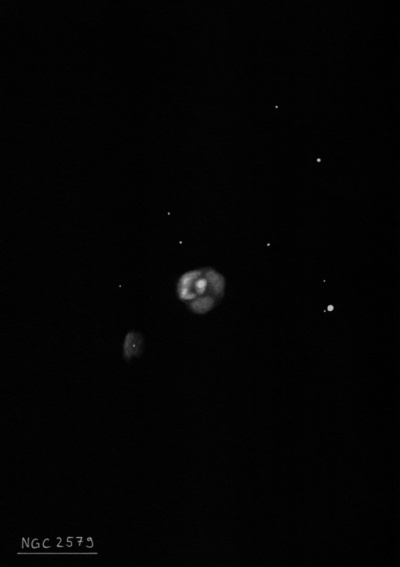
John Herschel discovered NGC 2579 = h3122 on 1 Feb 1835 and recorded "A double star (h4083) involved in pB nebulosity, which seems to belong to both stars; but of the two the smaller is more nebulous; diameter 50"; in a pretty rich patch of the milky way." The next night he logged "a double star, or a star and a nebula, very close and involving the star ... the field contains about 70 stars, of which 8 are about 9th mag. I cannot be quite positive that the neb extends beyond the large star, or that the small one is not a mere condensation of it. However, I remain pretty well satisfied of its investing both." His mean position (4 sweeps) corresponds with this compact HII region.
Joseph Turner described NGC 2579 as two pairs of double stars on 14 Feb 1882 with the 48" Melbourne telescope. Both pairs are oriented ~N-S on his sketch with the brightest star at the west end.
The Lynga catalogue includes NGC 2579 as an open cluster at 08 20.3 -36 15 (1950), placing the object 20' too far SE! At the Lynga position is a scattered group of stars. This error is repeated in amateur sky-plotting software such as MegaStar. ESO 370-PN?009 is a faint, detached piece off the southeast side with a separate ionizing star.
400/500mm - 17.5" (2/1/92): small, bright compact nebula involving a mag 10.5 star. Visible without filter as a small bright knot forming a close double with the mag 10.5 star just west. Using an OIII filter at 140x the size increases to 2' diameter and encompasses the mag 10.5 star. With this combination the nebula is quite prominent as the surface brightness is quite high! Located within a large scattered group of about 20 stars.
Notes by Steve Gottlieb